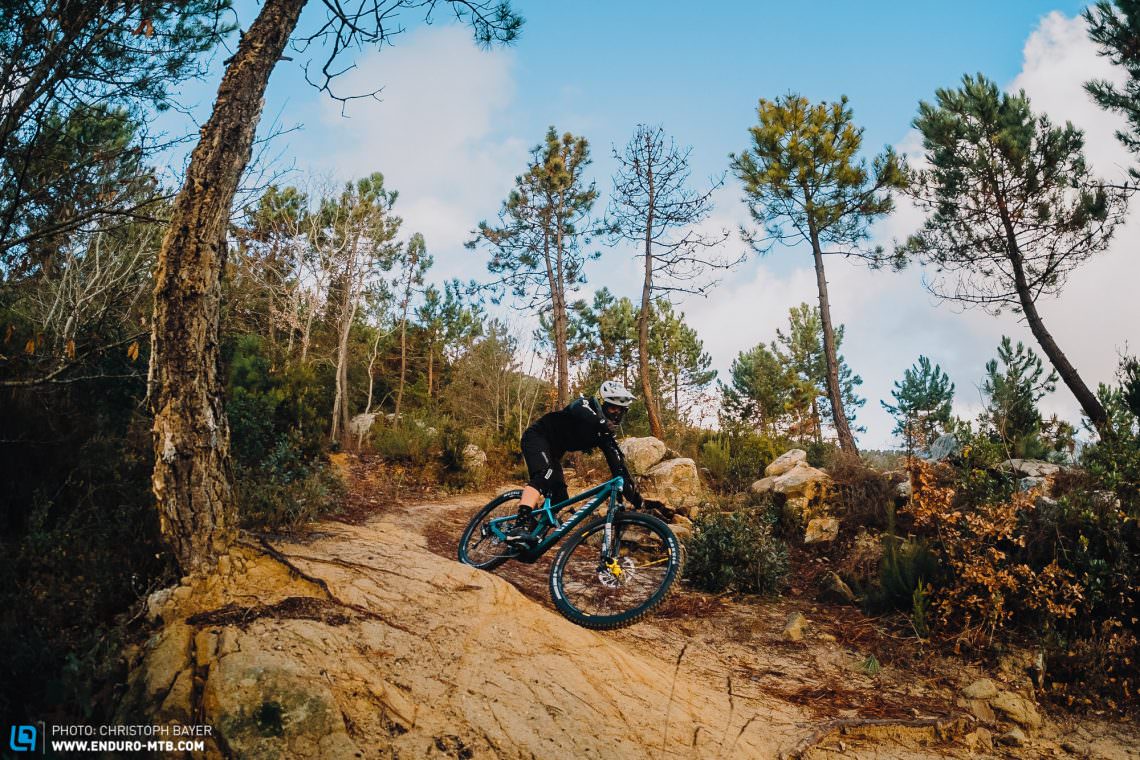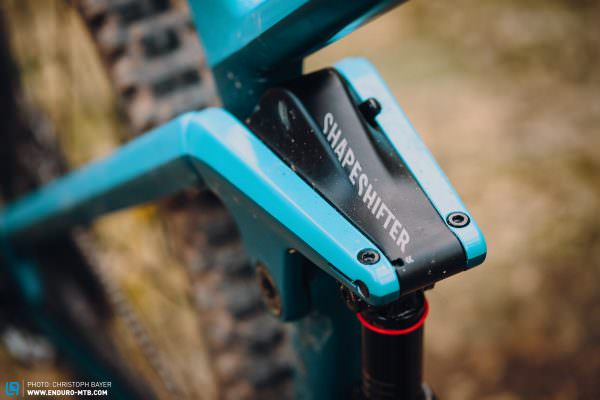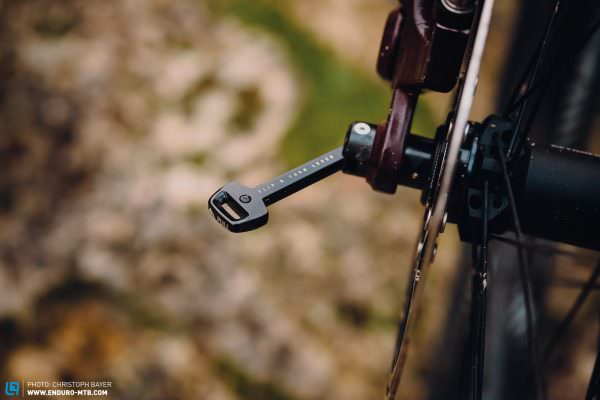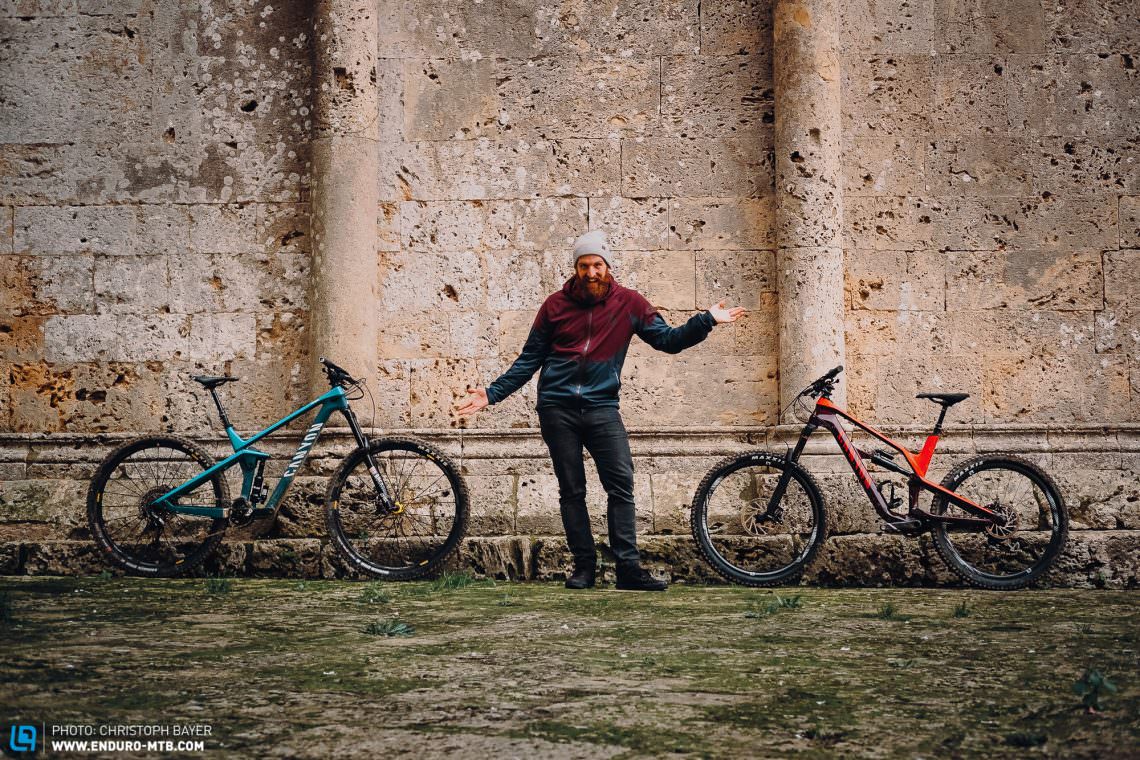The battle – Canyon Spectral vs. Strive
Before you’re able to swing your leg over the Spectral or the Strive, you’ll have to go through the same process. Both bikes have to be ordered online and get delivered to your door in a box. Following the included instructions on unpacking and assembling the bikes is very easy, with the necessary tools and a shock pump included for the initial setup. Despite the Shapeshifter, the Strive is no more complicated to assemble than the Spectral. When setting up the rear suspension, we recommend taking your time with both bikes – even small differences in the sag have a significant influence on the handling. According to Canyon, 28% sag is ideal. Alternatively, if you would like to test ride the bikes first or even buy one ready-assembled, you can do so at Canyon’s headquarters in Koblenz, Germany.

Climbing – which bike is the better climber
The riding position on both bikes is very comfortable, although the 2019 Strive is a bit more stretched than the more compact Spectral. Riding on level terrain, you’ll immediately want to reach for the Strive’s Shapeshifter to reduce the rear travel and steepen the seat tube angle. Climbing, neither the Spectral nor the Strive show any real weaknesses. However, in a direct comparison, there are some notable differences. The more compact Spectral climbs very efficiently without the use of the climb switch, offering good traction. It lets you master tight uphill sections very playfully. Only on long, monotonous or very steep climbs is it worth activating the climb switch. In comparison, once you’ve activated the Shapeshifter on the Strive CF you can completely spare yourself the effort of reaching for the climb switch. The bike remains high in its travel and doesn’t wallow no matter how steep the terrain. On technical climbs, the Strive is able to convince with more traction than the Spectral. Thanks to the 165 mm short cranks and the raised bottom bracket, clipping your pedals is extremely rare , letting you master the most technical terrain. In contrast, the lower weight and smaller wheels of the Spectral make it a bit more lively and more responsive than the Strive. It’s difficult to decide who the winner is here. Your choice will depend on what terrain you are riding, how much climbing you do on the bikes and on your perceived effort of having to reach for the climb switch.

Descending – a question of preference
Despite having the same amount of travel at the rear, the handling of the Canyon Strive and the Spectral could hardly be more different on the descents. We tested both bikes in the trail paradise of Massa Vecchia as well as in San Remo and on our home-trails on the foothills of the Alps. Heading down a flowy trail, the Spectral immediately invites you to pull up the front wheel into a manual and to pop off of whatever you can find. Its agility transforms even the simplest, flat and flowing trails into a playground. The suspension performs sensitively while offering a lot of support. The weight distribution is well balanced, which makes it easy and intuitive to control the bike through corners. The Spectral is a lot of fun to ride, even at slower speeds.
Trail = playground = Spectral
Trail = race track = Strive



Before the Strive really gets going on the descents, the Shapeshifter has to be set to downhill mode. To do so, just press the lever once and compress the rear suspension. Compared to the Spectral, it takes a certain gradient for the Strive to come alive and on flat trails, the bike has to go fast before it starts being fun. As the Spectral starts nearing its limits the Strive really starts to shine. The suspension is a bit plusher, but without lacking in pop. On top of that, the large wheels and the additional travel on the Team version keeps rider-confidence high in rough terrain. The handling of the Strive is a lot more composed than the Spectral, making for better high-speed stability. We tried XC mode on flowing trails but quickly decided against it. Though it let us pump the Strive better, we found it upset the balance of the suspension. The Spectral is more lively and agile in the tight stuff. However, for steep, challenging trails the Strive is the more potent and forgiving bike, though it does demand a more active riding style requiring you to actively weight the front wheel in open corners.



Strive or Spectral? Which bike do you choose?
Although the Canyon Strive and the Canyon Spectral have a lot in common, they appeal to different types of riders. The more affordable Spectral is guaranteed to bring a smile to the faces of trail riders who value agility and see the trails as playgrounds rather than hunting grounds. With its easy handling, it’s an excellent choice for beginners too.
The new Strive comes to life at higher speeds and on steeper descents. Its handling is very direct and it climbs efficiently to boot, but, in a back-to-back comparison, the Strive requires a more active riding style. It is the perfect choice for racers chasing seconds, as well as weekend warriors who regularly ride demanding trails.
For more info head to: canyon.com

This article is from ENDURO issue #037
ENDURO Mountainbike Magazine is published in a digital app format in both English and German. Download the app for iOS or Android to read all articles on your tablet or smartphone. 100% free!

Did you enjoy this article? If so, we would be stoked if you decide to support us with a monthly contribution. By becoming a supporter of ENDURO, you will help secure a sustainable future for high-quality mountain bike journalism. Click here to learn more.











